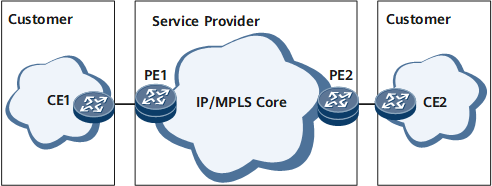Background
IP-layer mechanisms, such as Simple Network Management Protocol (SNMP), IP ping, and IP traceroute, are used to manage network-wide services, detect faults, and monitor performance on traditional Ethernet networks. These mechanisms are unsuitable for client-layer E2E Ethernet operation and management.
CFM supports service management, fault detection, and performance monitoring on the E2E Ethernet network. In Figure 1:
A network is logically divided into maintenance domains (MDs). For example, network devices that a single Internet service provider (ISP) manages are in a single MD to distinguish between ISP and user networks.
Two maintenance association end points (MEPs) are configured on both ends of a management network segment to be maintained to determine the boundary of an MD.
Maintenance association intermediate points (MIPs) can be configured as needed. A MEP initiates a test request, and the remote MEP (RMEP) or MIP responds to the request. This process provides information about the management network segment to help detect faults.
CFM supports level-specific MD management. An MD at a given level can manage MDs at lower levels but cannot manage an MD at a higher level than its own. Level-specific MD management is used to maintain a service flow based on level-specific MDs and different types of service flows in an MD.
